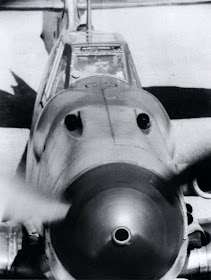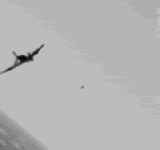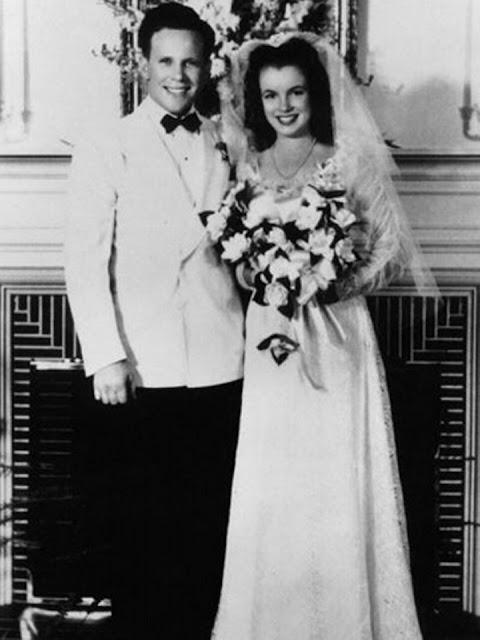The
Messerschmitt Bf 109 (aka ME 109) is a legendary Luftwaffe fighter from World War II. If casual history buffs know any particular German aircraft from the period, this is likely to be it. The Bf 109 was the most-produced aircraft on the German side with 33,984 units, and it saw action everywhere, from the first day of the war to the very last. It unquestionably was the single most important Luftwaffe aircraft, and more aerial kills were made with it than with any other aircraft in history. While I personally do not think that it was the best or most important fighter of the war - I give that crown to the Mustang - opinions on that can vary. However, I do not mean to slight it. By several measures, the "Messerschmidt" as it became commonly known was the dominant aircraft not just of World War II, but of all time.

The German Aviation Ministry (Reichsluftfahrtministerium), headed by Hermann Goering, knew from the dawn of the Third Reich era in 1933 that it needed a single-seat fighter. All that were available at the time were biplanes, so the Bf 109 was a huge leap forward. Based upon a March 1933 technical document, Willy Messerschmidt and his chief designer Robert Lusser were allowed by the RLM to enter a competition against Arado and Heinkel (later joined by the Focke-Wulf company, whose chief designer was the famous Kurt Tank). The two designers began work on Project No. P.1034 in March 1934, and had a full mockup completed by January 1935. The first prototype was ready that May.
 |
| Wind tunnel tests on an advanced version. |
Flight testing at Augsburg using a Rolls Royce Kestrel VI engine went well that summer, and subsequent testing took place at Rechlin. The second prototype, V2, used a 600 hp Jumo 210A engine. A third prototype with guns flew in May 1936. The fly-off against the other aircraft took place that March, and at first it did not go particularly well. The pilots were unimpressed with the Bf 109, particularly the lack of forward visibility on the ground. However, the competitors had their own problems, and the lighter basic design of the Me 109 gave it some aerodynamic advantages (such as a thinner wing). With less drag, the same engine gave the 109 better results than the other aircraft. The Messerschmidt design thus was the fastest of the entrants, a key consideration for a fighter, and on 12 March 1936 Messerschmidt had the contract.
 |
| Good view of the armament and landing gear, which opened out from the wing root. |
The basic design philosophy of the Bf 109 was to keep it light and aerodynamic. The guns were put in the nose to keep the drag down, but later one MG 17 on each side was added to the wings. Various other weapons combinations were tried out during subsequent development, such as gun pods under the wings, with the usual trade-offs of firepower versus performance.
 |
| This colorized picture is typically identified as a Bf 109 G-2 III./JG52 'Battle of Stalingrad' from the late Summer 1942. As Raja pointed out below, that indeed is the emblem of the third Staffel of the Gruppe. I incorrectly thought that it might be a Regia Aeronautica symbol, but the two just bear a (to my eyes, anyway) close resemblance. |
The reason that the 109 had the "Bf" designation was that it originated from the Bayerische Flugzeugwerke (literally "Bavarian Aircraft Works"), which was Messerschmidt's company before he actually owned it. After 11 July 1938, Messerschmidt himself owned the company, and the plane interchangeably was called both Bf 109 and Me 109 by pretty much everyone (all other planes at the company after that had the ME designation). The official name, however, always remained Bf 109.
 |
| Some leftover Spanish (Hispano) versions. These may have been used for filming "The Battle of Britain" in 1969. |
The first variant, Bf 109A, was tried out in the Spanish Civil War of 1936-1939. The plane proved superior to its competitors, and it and subsequent versions remained in front-line service through the Polish and French campaigns of 1939-1940. During the Battle of Britain in 1940, the 109 received its first real challenge from the Hurricanes and Spitfires of the Royal Air Force. Much is made of the superiority of British fighters, but that is highly debatable. At worst, the 109 was roughly equal to those planes, and under certain circumstances remained their superior. However, the 109 was taxed when it had to operate far from its French bases, and this imposed its own limitations on the aircraft's accomplishments that the British (for the time being) did not incur.
 |
| A member of Britain’s Home Guard inspects a Bf109 fighter shot down during the Battle of Britain, 1940. Note the distinctive unit markings on the fuselage. |
The Bf 109 went through a sequence of modifications and upgrades during the conflict, just as did the Supermarine Spitfire on the British side. The high point for the Bf 109 probably was Operation Barbarossa in June 1941, when the Soviet fighters proved completely inadequate against it. There were so many Soviet aircraft, though, that the Luftwaffe never really managed to "clear the skies" of the relentless Soviets.
 |
| Hans-Joachim Marseille with Willy Messerschmitt (Right) after trying out the new Gustav at the Messerschmitt plant. Hans-Joachim Marseille was a top Luftwaffe ace in North Africa, with 158 official victories, a very high total on the Western front. |
The Bf 109s remained superior in most situations on the Eastern Front to all challengers, though usually their area of superiority was limited to particular areas along the 2,000-mile front. You can only dominate airspace that you can effectively cover, and after 1942 there never were enough airplanes to dominate long stretches of the front.
 |
| A 1940 Mercedes-Benz advertisement for aircraft motors. The Messerschmitt Bf-109 fighter and its Daimler-Benz 605 inline engine are depicted. |
During 1942, the Focke-Wulf company, which had lost the initial competition against Messerschmidt, began producing the extremely efficient FW 190. It was a somewhat heavier fighter than the 109, more capable at low-level attacks and ground attack (Jabo) missions. After its introduction, the Bf 109 was used more for high-altitude bomber interceptions from that point forward, though the Luftwaffe was so overstretched that generally whatever plane was available handled operations. The Bf 109 was not ideally suited for missions against heavy bombers due to its light armament, but a well-handled Bf 109 could still take out a four-engined Allied bomber with a little luck or draw off the escort fighters so that heavier fighters could tackle the bombers.
 |
| Production line of Bf 109s. Such factories were a major target of the Allied bomber offensive "Big Week" in February 1944. |
Many of the major aces of the Luftwaffe (Experten) spent their careers in 109s despite the availability of newer aircraft with better performance features. It was a nimble mount that could get you out of trouble fast.
 |
| A Bf 109 which did not make it out of Stalingrad. The story goes that in January 1943, there were six flyable 109s left in Stalingrad when their airfield - one of two airfields in the city - was over-run. Five of the planes attempted to land at the other airfield, but all crashed. The sixth gave up and flew out to the west, and that ended all fighter protection over the city. The end followed less than two weeks later. |
Aerial dominance on the Eastern Front passed to the Soviets after the July 1943 battle of Kursk due to sheer numbers and attrition, though the Bf 109s individually remained superior to anything thrown at them throughout the conflict. On the Channel Front, the FW 190 took over after 1942, led by JG 26. The 109 became dominant in home defense and secondary theaters, but it still served in some capacity pretty much everywhere.
Toward the end of the war, many of the best 109 pilots were transferred to the new jet squadrons flying the
Me-262, which served two purposes: it gave the most advanced planes to the best pilots; and it also effectively protected those pilots, as missions by jets were few and far between. The last thing the Germans wanted was one of their top aces shot down, with all the attendant publicity, so many of the pilots with the highest kill totals were gradually removed from active combat one way or the other. Putting them in the jet squadrons neatly solved that problem without diminishing them by relegating them to desk jobs. However, some of the Experten also gained further glory in the jets.
 |
| Erich Hartmann, a top German fighter pilot. He was the most successful fighter ace in the history of aerial warfare. Nicknamed the Blonde Knight and the Black Devil by his Soviet adversaries. He flew 1,404 combat missions and participated in aerial combat on 825 separate occasions. He claimed and was credited with, shooting down 352 Allied aircraft - 345 Soviet and 7 American. |
There are about twenty Bf 109s remaining, scattered across the globe in museums. A handful is on display in Germany, while a similar number are in the United States.
 |
| German armorer loading ammunition into a Bf 109 fighter of JG 54 'Grünherz' fighter wing, Russia, Aug 1941. Those appear to be 20mm cannon rounds (Reiners, Federal Archive). |
2020









































































